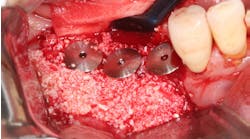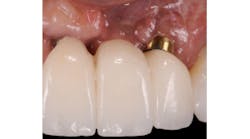Researchers uncover new evidence of ancient dentistry
Sept. 20, 2012
Researchers may have uncovered new evidence of ancient dentistry in the form of a 6,500-year-old human jaw bone with a tooth showing traces of beeswax filling, as reported Sept. 19 in the open access journal PLOS ONE.
The researchers say the beeswax was applied around the time of the individual's death, but cannot confirm whether it was shortly before or after. If it was before death, however, it was likely intended to reduce pain and sensitivity from a vertical crack in the enamel and dentin layers of the tooth.
Evidence of prehistoric dentistry is sparse, so this new specimen, found in Slovenia near Trieste, may help provide insight into early dental practices.
Read more in this article from ScienceDaily.






